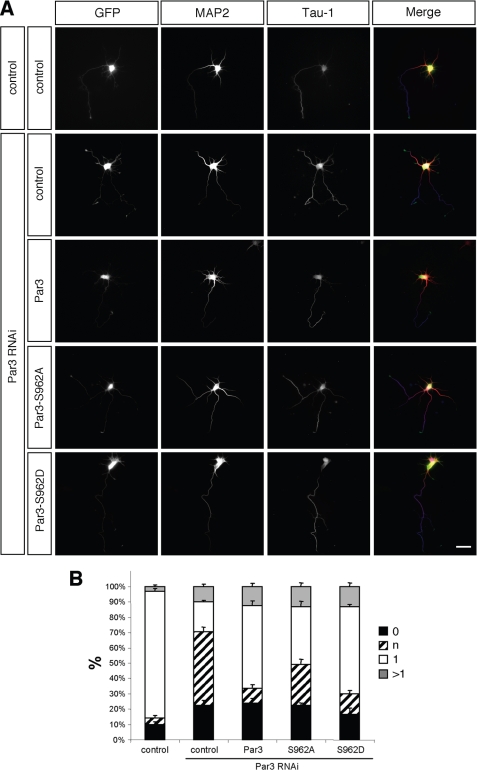FIGURE 7.
Role of Par3 phosphorylation for neuronal polarity. A and B, hippocampal neurons were transfected at 0 d.i.v. with vectors for GFP (control), myc-tagged Par3, Par3-S962A (S962A), or Par3-S962D (S962D), and pSM2 (control) or a vector for an shRNA directed against rat Par3 (RNAi), as indicated. Transfected cells were analyzed at 3 d.i.v. by staining with an anti-MAP2 (red) and the Tau-1 (blue) antibody. Scale bar, 40 μm. B, the development of neuronal polarity was analyzed by determining the number of unpolarized neurons without an axon (0, black bars), unpolarized neurons with one or more neurites of undefined identity (indeterminate neurites longer than 50 and weak of absent Tau-1 staining; n, hatched bars), polarized neurons with a single axon (1, white bars), and neurons with multiple axons (>1, gray bars) (t test: multiple indeterminate neurites: p < 0.001, control + Par3 RNAi compared with control, wild type Par3 + Par3 RNAi, S962D + Par3 RNAi, S962A + Par3 RNAi, and S962A + Par3 RNAi compared with wild type Par3 + Par3 RNAi, S962D + Par3 RNAi; means ± S.E.). ANOVA (p < 0.0001) and a parametric Student's t test were used to test statistical significance.

